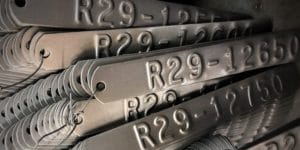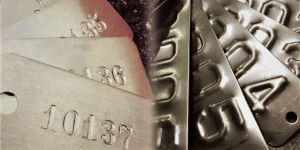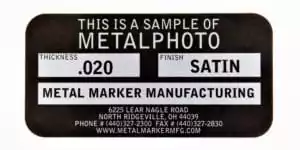Fire hydrant identification tags provide vital information for first-responders and firefighters. They rely on clear and accurate information in order to quickly and safely operate hydrants.
What Are They Used For?
First Responders/Firefighters
Fire hydrants are one of those tools which we hope to never need, but depend on. They are an invaluable tool for firefighters and first-responders in emergency situations. In order for them to be used safely and effectively, they must be marked with important information.
When there is a building up in smoke, the last thing firefighters need is to be doing is struggling with a hydrant that is not functional. This wastes time which becomes invaluable in an emergency.
Fire hydrants which are not ready to be used need to be properly and clearly marked. This can be something as simple as an “out of service” or “requiring maintenance” nameplate.
In addition, operators of the hydrant must know the correct procedures for a specific valve. Many fire hydrants are marked with water flow capacity to provide operators the info they need.
Similarly, fire extinguishers are also commonly marked with metal identification tags.
Theft/Illicit Use Prevention
Sources of fresh water can be prone to illicit use or theft. Regardless of the reasoning, it is a crime to take water from a fire hydrant. As such, marking a reminder that says “unauthorized use is prohibited” serves as a simple but effective deterrent. This can also serve to prevent vandalism and other interference with the valves.
Custom Messaging
In addition to safety and theft prevention, local districts may choose to mark their hydrants with other identifiable information. This custom messaging can include anything from department numbers, serialized numbers for traceability, or even contact information and logos.
If something does go wrong with a hydrant, providing contact information directly on it provides an easy way to communicate that to the proper authorities.
Types
Nameplates/Tags
Fire hydrant ID tags are not a one-size-fits-all type solution. There are many hydrant types, district requirements, and durability needs.
Most local districts choose to mark their hydrants in the way that makes the most sense for them.

Nameplates are also often bolted directly onto the device using the bolts or screws which are already in place. Holes in the tag allow for this placement. In some cases, the nameplates are bent at a 90 degree angle allowing for angled visibility while latched onto the bolt.
Tags can also be attached via wire which wraps around a bolt or part, and in some cases metal cable ties can be applied. It all depends on the type of hydrant, the information needed on the ID tag, and the durability required.
Ring Shaped Tags
Ring style tags are also frequently used to mark fire hydrants. This markers are made in various sizes, ranging from just a few inches to large enough that they can wrap around the big hydrant valves.
These tags are often made from plastic, but can be made from metal as well. Most commonly they are used to mark an out of service hydrant. This means the marking will be temporary, which is why plastic can make sense in some applications.
Processes
Stamping/Embossing
For applications requiring durability, the stamping and embossing processes are two of the most trusted. Stamping and embossing both press information into the metal material. Stamping indents your information, while embossing raises the characters upwards in the material.

These processes are great for hydrants as they provide clear and easy to read designs, while offering the highest level of durability.
Photo Anodization
The photo anodizing process is highly versatile in that it can include any information, design, or imaging. With this process, the information is directly embedded into layers of an anodized aluminum material. This provides exceptional durability, and clear legibility.

For organizations looking to produce metal hydrant rings, this would be a great choice as a wide range of shapes can be produced to fit varying specifications.
Materials
Brass
Brass is the most commonly used material for fire hydrant identification plates. When selecting a material for an outdoor application, durability is key.
This material is very durable, including a high level of corrosion resistance. It can withstand not only exposure to water from the pump, but other weather elements as well.
Aluminum
While brass might be the typical usage, aluminum is also a highly useful material for marking.
Aluminum also provides the ability to use the photo anodization process. This can be a major benefit if your district wants to utilize custom logos or color code their hydrant tags.
Wrap-Up
Marking fire hydrants might seem like an afterthought, but in an emergency situation, it can make a huge difference. Not only does it benefit firefighters and first-responders, but also provides clear and accurate information to the community.